Space

Infrared emission from methane suggests atmospheric heating by auroral processes. »
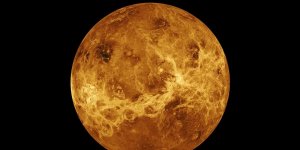
Researchers may have identified the missing component in the chemistry of the Venusian clouds that would explain their colour and 'splotchiness' in the UV range, solving a longstanding mystery. »
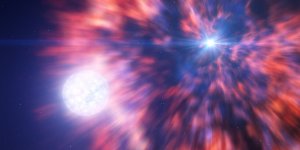
Astronomers have found a direct link between the explosive deaths of massive stars and the formation of the most compact and enigmatic objects in the Universe — black holes and neutron stars. »

By combining several years of observations from NASA's Hubble Space Telescope along with conducting computer modelling, astronomers have found evidence for massive cyclones and other dynamic weather activity swirling on a hot, Jupiter-sized planet 880 light-years away. »

Carrying NASA scientific instruments as part of its Commercial Lunar Payload Services initiative, Astrobotic’s Peregrine lander launched on United Launch Alliance’s (ULA) Vulcan rocket at 2:18 a.m. EST from Launch Complex 41 at Cape Canaveral Space Force Station in Florida. »

The orbiter has performed 56 flybys of Jupiter and documented close encounters with three of the gas giant’s four largest moons. »
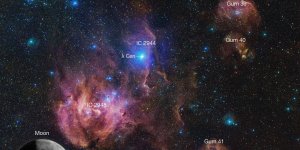
The so-called Running Chicken Nebula, home to young stars in the making, is revealed in spectacular detail in this 1.5-billion-pixel image captured by the VLT Survey Telescope (VST), hosted at ESO’s Paranal site in Chile. »

NASA’s James Webb Space Telescope recently trained its sights on unusual and enigmatic Uranus, an ice giant that spins on its side. Webb captured this dynamic world with rings, moons, storms, and other atmospheric features – including a seasonal polar cap. The image expands upon a two-color version released earlier this year, adding additional wavelength coverage for a more detailed look. »
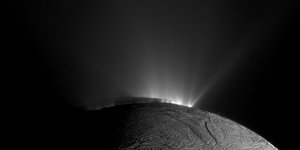
A study zooms in on data that NASA’s Cassini gathered at Saturn’s icy moon and finds evidence of a key ingredient for life and a supercharged source of energy to fuel it. »

Now at 1,000 days on Mars, the mission has traversed an ancient river and lake system, collecting valuable samples along the way. »

The Odyssey orbiter captured clouds and dust in the Red Planet’s skies, along with one of its two tiny moons. »

In a remarkable discovery, astronomers have found a disc around a young star in the Large Magellanic Cloud, a galaxy neighbouring ours. »

This new Picture of the Month from the NASA/ESA/CSA James Webb Space Telescope reveals intricate details of the Herbig Haro object 797 (HH 797). »

Scientists help analyze lunar samples collected by Apollo 17 astronauts. »

Observations by the MIRI instrument on NASA’s Webb telescope are providing new clues about the time window when planets can form around a young star. »

How did the molecular building blocks for life end up on Earth? One long-standing theory is that they could have been delivered by comets. Now, researchers from the University of Cambridge have shown how comets could deposit similar building blocks to other planets in the galaxy. »

A new study could explain the ‘missing’ exoplanets between super-Earths and sub-Neptunes. »

Gravity data collected by NASA’s Juno mission indicates Jupiter’s atmospheric winds penetrate the planet in a cylindrical manner, parallel to its spin axis. »

Data collected by NASA’s Juno mission indicates a briny past may be bubbling to the surface on Jupiter’s largest moon. »

An international team has spotted a remote blast of cosmic radio waves lasting less than a millisecond. This 'fast radio burst' is the most distant ever detected. Its source was pinned down by the European Southern Observatory’s Very Large Telescope in a galaxy so far away that its light took eight billion years to reach us. »

Initial studies of the 4.5-billion-year-old asteroid Bennu sample collected in space and brought to Earth by NASA show evidence of high-carbon content and water, which together could indicate the building blocks of life on Earth may be found in the rock. »

NASA’s Lucy spacecraft is preparing for its first close-up look at an asteroid. On Nov. 1, it will fly by asteroid Dinkinesh and test its instruments in preparation for visits in the next decade to multiple Trojan asteroids that circle the Sun in the same orbit as Jupiter. »
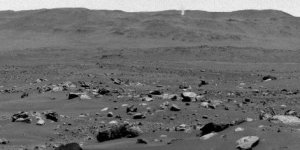
The six-wheeled geologist spotted the twister as part of an atmospheric exploration of Jezero Crater. »

Jupiter’s moon Europa is one of a handful of worlds in our solar system that could potentially harbor conditions suitable for life. »
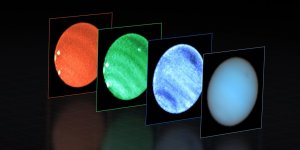
Using ESO’s Very Large Telescope (VLT), astronomers have observed a large dark spot in Neptune’s atmosphere, with an unexpected smaller bright spot adjacent to it. »

With a remarkable observational campaign that involved 12 telescopes both on the ground and in space, including three European Southern Observatory (ESO) facilities, astronomers have uncovered the strange behaviour of a pulsar, a super-fast-spinning dead star. »

A new investigation with NASA’s James Webb Space Telescope into K2-18 b, an exoplanet 8.6 times as massive as Earth, has revealed the presence of carbon-bearing molecules including methane and carbon dioxide. »

After years of anticipation and hard work by NASA’s OSIRIS-REx (Origins, Spectral Interpretation, Resource Identification and Security – Regolith Explorer) team, a capsule of rocks and dust collected from asteroid Bennu finally is on Earth. »

Magnetars are the strongest magnets in the Universe. These super-dense dead stars with ultra-strong magnetic fields can be found all over our galaxy but astronomers don’t know exactly how they form. »

Unusual white dwarf star is made of hydrogen on one side and helium on the other. »

Astronomers have uncovered a link between Neptune's shifting cloud abundance and the 11-year solar cycle, in which the waxing and waning of the Sun's entangled magnetic fields drives solar activity. »

India's Chandrayaan-3 mission's lander module accomplished a successful touchdown on the lunar surface on Wednesday. »

A new paper suggests the same conditions that created the cracks could have been favorable to the emergence of microscopic life. »

Using the Atacama Large Millimeter/submillimeter Array (ALMA), astronomers have found the possible ‘sibling’ of a planet orbiting a distant star. »

Astronomers using Hubble have discovered a swarm of boulders that were possibly shaken off the asteroid when NASA deliberately slammed the half-ton DART impactor spacecraft into Dimorphos at approximately 14,000 miles per hour. »